#Nicholas Cusanus
Explore tagged Tumblr posts
Note
Do you think it would be possible for an Evangelical or Pentacostal church to enter full communion with Rome (presuming that their pastors would get ordained etc) while keeping most of its current liturgy?
I haven't really been to any Protestant services of a low church persuasion before, so I don't think I can competently comment on it. But in principle, I don't see why not.
In Allatae sunt, Pope Benedict XIV says that when groups of "schismatics" return to the Catholic Church, they should not be expected to give up their liturgical traditions. "[The Church's] great desire is [...] in short, that all may be Catholic rather than all become Latin." Now, this was written with the Orthodox Churches in mind. But I don't see why this would ipso facto mean that it couldn't also be applied to groups born of the Protestant Reformation.
Now, Anglican Ordinariate communities are technically Roman Rite Catholics, but their breviary and missal might bring something to the conversation, too. Namely, as their website says, Divine Worship: The Missal is a very unique Catholic liturgical text in that it "marks the first time the Catholic Church has sanctioned liturgical texts deriving from the Protestant Reformation." And if it's happened once, well, I don't see why it can't happen again. I would imagine that any explicitly anti-Catholic or overtly Calvinistic language would need to be expunged, and the Communion prayer would need to incorporate the Epiclesis and Words of Institution, at minimum.
Based off of these two principles, I don't think it's necessary impossible for what you're suggesting to come to pass. I think these rites would potentially look radically different from the current 24 rites of the Catholic Church, but as early as the 1450s, Cardinal Nicholas of Cusa was making suggestions for incorporating religious traditions that would have looked radically different from the Catholic rites prominent in his own time.
But I wonder if someone has actually talked about this possibility in a way that was publishable in an academic environment?
#asks#Christianity#Catholicism#ecumenicism#Allatae sunt#Pope Benedict XIV#Evangelical Christianity#liturgy#Ordinariate#Nicholas Cusanus#Protestant Reformation
7 notes
·
View notes
Text
What would have happened if what lived in the hearts of the greatest individuals – Nicolaus Cusanus, Paracelsus, Agrippa, Giordano Bruno, and Campanella – would have entered the hearts of everyone? […] What if the old and the new had met and intermingled, spirit with blood, and blood with spirit?
— Gustav Landauer, Revolution and Other Writings: A Political Reader, transl Gabriel Kuhn, (2010)
#German#Gustav Landauer#Revolution and Other Writings: A Political Reader#Gabriel Kuhn#(2010)#Nicolaus Cusanus#Nicholas of Cusa#Paracelsus#Heinrich Cornelius Agrippa#Giordano Bruno#Tommaso Campanella#What if? What if? What if...
21 notes
·
View notes
Text
[6.10.1] Cusanus, Nicolaus on God, Universe, Christ, and Human Being
Nicholas of Cusa (Nikolaus Cryfftz or Krebs in German, then Nicolaus Cusanus in Latin, 1401-1464) “Christian Neoplatonic framework to construct his own synthesis of inherited ideas”. Cusanus addresses the four categorical realities traditionally found in Christian thought: God, the natural universe, Christ and human beings. God is absolute and maximum. The following OntoUML diagram shows…
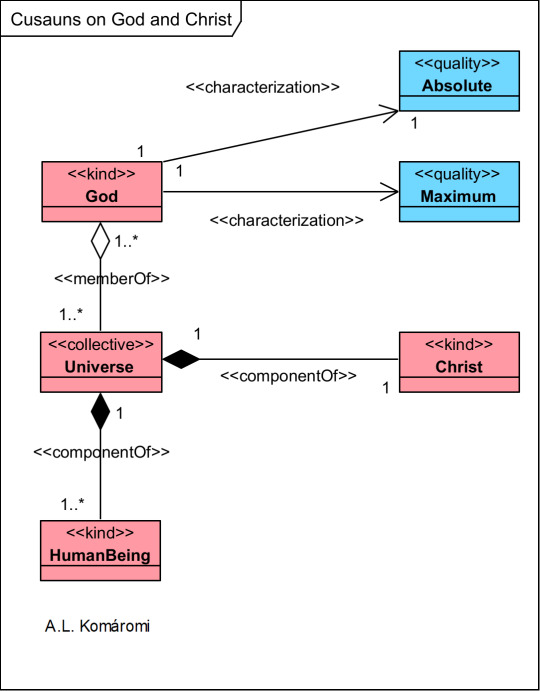
View On WordPress
0 notes
Text
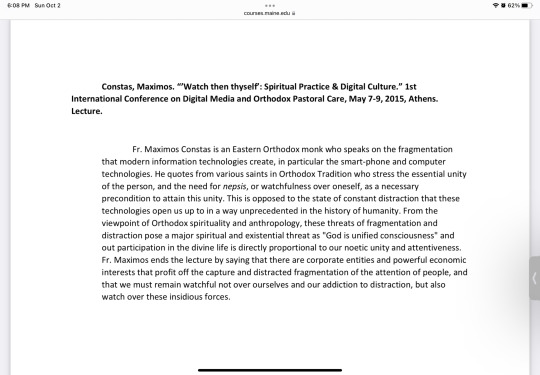
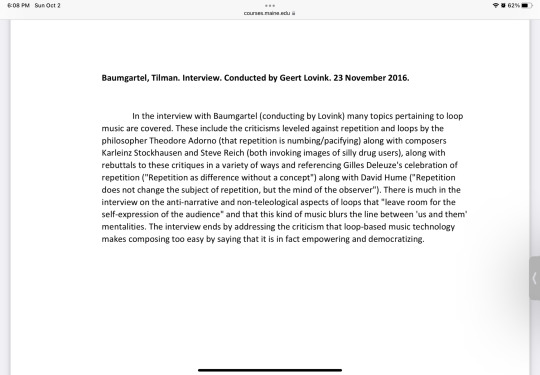

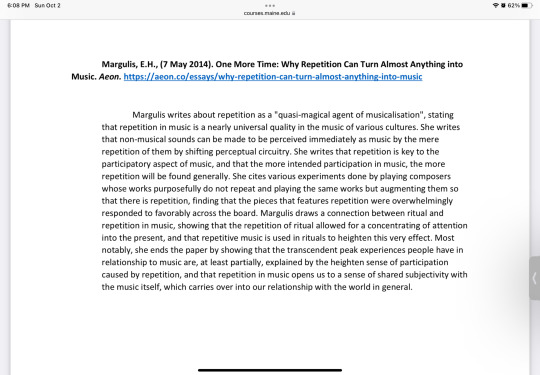
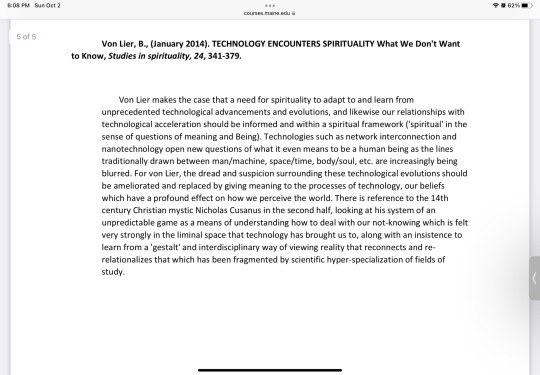
Annotated Bibliography #1
#orthodox#monk#Nicholas Cusanus#spirituality#tape loops#loops#deleuze#adorno#david hume#magical#transcendence#unityconsciousness#future#religion#academic research#writing ideas
0 notes
Note
Hey 👋🏻 I would like to ask number 19, 21 and 25 from your latest history ask game. :-)
Thank you! :D Here you go:
19. Which historical kingmaker / hand behind the throne kinda person would you gladly be a puppet of?
Really? None at all. They inevitably fall out of favour at some point and being too closely associated with them might prove disadvantageous at best, and deadly at worst. I will say however that I whole-heartedly agree with Richelieu's opinion on cats.
21. How good are you at remembering names and dates?
There's this expectation for those who study/studied/work in (a field related to) history that you'll be able to know *all* the names and dates in the world off the top of your head.
The thing is that learning dates by heart isn't as important as many people would expect as you can look those up online or in a book most of the time.
Personally, I'd say I am quite decent at remembering historical names and dates, which however is not the case in my daily life. I am very bad at remembering e.g. the birthdays of living persons around me, but give me a historical figure I've spent some time studying and I'll know their birthday, day of baptism, wedding anniversary, the day they died and when they were buried off the top of my head. Apparently my brain's memory function only works when the people in question have been dead for a couple of centuries. :-)
25. The topic/title of your last History paper?
Thomas Livingstone! A participant of the Council of Basle (1431–1449), and the first Scottish clergyman to attend. Although only a minor figure, he was a rather interesting person. Presumably the illegitimate son of a nobleman, Thomas rose to become an advisor to King James II of Scotland and was close with his much more well-known contemporary, Nicholas of Cusa (Nikolaus von Kues; Cusanus). His illustrious connections did however not save him from financial concerns later in life, and he had to legally fight to reclaim an in commendam (a type of benefice) granted to him by Pope Nicholas V that was taken from him again and redistributed to another clergyman under Calixt III. His legal battle against the guy who was given the in commendam in his stead is rather interesting as the affair spans the (albeit rather short) lives of several popes. Sadly, Thomas didn't live to see the conclusion of his legal battle; Pope Pius II however posthumously ruled that Thomas had been in the right, and ordered all papal paperwork regarding the case to be altered accordingly. Why Pius II acted shortly after Thomas' death remains unclear; it is possible though that his friend Nicholas of Cusa, an influential cardinal, may have spoken to the Pope on his behalf in order to set the record straight for posterity.
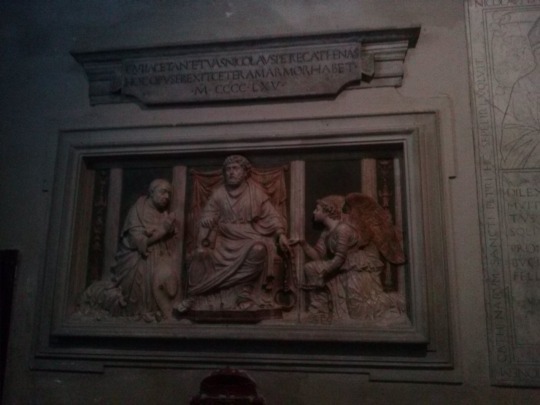

...I haven't been to any of the now fairly obscure Scottish churches (which definitively wasn't the case at the time!) and monasteries I researched, but here are two pictures of the memorial of Nicholas of Cusa, Thomas Livingstone's close friend since their student days at the university of Cologne.
#ask game#ask response#nordleuchten#r replies#history#what we do in the shadows (of the library)#thomas livingstone#nicholas of cusa#nikolaus von kues#cusanus
1 note
·
View note
Quote
the ultimate and deepest contemplation of God is boundless, infinite, and in excess of every concept. For, assuredly, every thing of which there is a concept is encompassed by [that] concept. But God exceeds all this. For the concept of God is [an absolute] Concept, or an absolute Word, which enfolds within itself everything which can be conceived; but it is not conceivable in anything else.
Nicholas of Cusa, Trialogus De Possest, n. 40
#Nicholas of Cusa#Cusanus#Nikolaus von Kues#Trialogus#Possest#Mystic#Philosophy#Theology#God#Panentheism
21 notes
·
View notes
Photo





By Jean Marie Carey
Guido Ascanio Sforza di Santa Fiora was born 26 November 1518 in Rome. In addition to being born into the Milanese dynasty (which had begun fading by the beginning of the 16th Century) he was also the son of Costanza Farnese and therefore grandson of Pope Paul III, brother of Cardinal Alessandro Sforza (1565), uncle of Cardinal Francesco Sforza and great-uncle of Cardinal Federico Sforza (1645). During his time as a cardinal he served as legate as well as administrator of different towns and episcopal sees.
His ecclesiastical career started very early with his selection as Bishop of Viterbo, Acquapendente, Bagnoregio, Montefiascone, Tuscania and San Martino al Monte Cimino on 12 November 1528 when he was not quite ten years of age. He resigned in 1548.
The six dukes who founded the Sforza dynasty of princes, popes, and cardinals descended from the Romagnol condottiere Muzio Attendolo (1369–1424), a kinsman of Micheletto Attendolo. Muzio's illegitimate son Francesco took his father's nom de guerre (sforzo means “struggle”), and so became Francesco Sforza. Through his marriage in 1441 to Bianca, daughter of Filippo Maria Visconti, he claimed the dukedom of Milan after the collapse of the Ambrosian republic in 1450. In 1445 Francesco's brother Alessandro (1408–73) became ruler of Pesaro (in the Papal State), which he and his descendants ruled until 1512; in 1493 Alessandro's grandson Giovanni of Pesaro married Lucrezia Borgia.
During the height of their wealth and power the Sforza clan were builders of churches and castles as well as collectors of antiquities and patrons of artists throughout Italy. Many artworks surviving from the Renaissance bear the Sforza seal or name even when the name of the maker is unknown.
Guido Ascanio Sforza, one of the last male direct inheritors of the family name, died on 6 October 1564 of fever in Mantua. His body was transferred to Rome and buried in his family's chapel in the patriarchal Liberian basilica.
Reference: Gordon Campbell. "Sforza family." In The Oxford Dictionary of the Renaissance. Oxford University Press, 2003. http://www.oxfordreference.com/view/10.1093/acref/9780198601753.001.0001/acref-9780198601753-e-3264.
Leonardo, da Vinci, Study for Sforza Monument, c. 1488-90. Silver point. Windsor Castle, Royal Library.
Master of the Sforza Altarpiece, Virgin and Child Enthroned, ca. 1495. Oil on poplar. Photo: Volker-H. Schneider. Gemäldegalerie, Staatliche Museen zu Berlin, Nr. 1433.
Sforza Castle (Castello Sforzesco), Originally 14th c., Milan, Italy.Photo: Sara N. James.
Antonio Pisano Pisanello, Francesco Sforza (1401-1466), ca. 1441. The Metropolitan Museum of Art; Rogers Fund, 1974; 1974.169
Stanislas Mogila, Hours of Bona Sforza, Folio #: fol. 036v-037r, 1527-1528. Annunciation, with arms of Bona Sforza in margin. Bodleian Library, University of Oxford, Shelfmark: MS. Douce 40.
Further Reading: Kathleen Christian. Empire without End: Antiquities Collections in Renaissance Rome, c. 1350-1527. New Have: Yale University Press, 2010.
Charles H. Carman. Leon Battista Alberti and Nicholas Cusanus: Towards an Epistemology of Vision for Italian Renaissance Art and Culture. Burlington, VT: Ashgate Publishing, 2014.
#otd#italian#art#italian art#italian cardinals#catholic church#renaissance italy#Roman Catholic Church#Sforza#Guido Ascanio Sforza di Santa Fiora#sforza altarpiece#bona sforza#leonardo da vinci#pisanello#medal#book of hours#art patronage
43 notes
·
View notes
Text
Nicholas then proposes some geometrical “exercises” to provide his readers some object lessons designed to teach how we might reach for the unlimited even while we are aware that we cannot grasp what the infinite God may be. For instance, we are to imagine a circle and a straight line or tangent that meets the circle. From a certain perspective, as the diameter or circumference of the circle increases, its circumference approaches the straight line and appears less and less curved. If we then imagine and extrapolate the circumference to the infinite, we can almost “see” that both straight tangent and curved circumference should coincide—a kind of “coincidence of opposites” that is a figure of how we may think beyond limited things toward the transcendent One. All this is mathematically impossible, of course, but it demonstrates some metaphorical steps for moving beyond the finite toward the infinite that might be transferred from geometrical figures to created beings and their Creator.
[https://plato.stanford.edu/entries/cusanus/#NicTho]
1 note
·
View note
Photo

EPIC® CIGARS CHRONICLES, THE SQUARING THE CIRCLE CIGARS, DE QUADRATURA CIRCULI, NICHOLAS OF CUSA CIGARS SERIE, IN MEMORIAM EPIC GENIUS: NICOLAUS CUSANUS (1401-1464), EPIC® CIGARS REGISTERED IN DOMINICAN REPUBLIC,THE UNIQUE, AUTHENTIC, ORIGINAL AND LEGITIMATE EPIC® CIGARS BRAND, DR.
0 notes
Photo

EPIC® CIGARS CHRONICLES, THE SQUARING THE CIRCLE CIGARS, IN MEMORIAM EPIC GENIUS: NICHOLAS OF CUSA, DE QUADRATURA CIRCULI, NICOLAUS CUSANUS. EPIC® CIGARS REGISTERED IN DOMINICAN REPUBLIC,THE UNIQUE, AUTHENTIC, ORIGINAL AND LEGITIMATE EPIC® CIGARS BRAND, DR.
0 notes
Text
I've never hit the jackpot before, but I just found the entire corpus of Cardinal Nicholas of Cusa's works, for free, in English, so I guess I have an idea on what it must feel like.
10 notes
·
View notes
Quote
‘What do the living ask, but to live? What does he who exists ask, but to be? You, therefore, who are the giver of life and of being, are also the One who seems to be sought in the various rites and in various fashions, who is called by various names, and who yet remains unknown and ineffable. You, who are infinite power, are nothing of that which you have created; nor can the creature grasp the idea of your infinity, for there is no relation between finity and infinity. But you, almighty God, who are invisible to all intellects, can make yourself visible in such form as you can be grasped. Therefore, hide yourself no longer, oh Lord. Have mercy, reveal your face, and all peoples shall be saved. For no one can shun you, unless it be he who does not know you. If you deign to heed our plea, the sword, hate, envy, and all evil shall disappear, and all shall know that in the multiplicity of rite, there is one religion. If this multiplicity of rites cannot be given up, or if it seems not good to do away with it, since the differences themselves may become a spur to piety, bringing each land to cultivate it’s own customs with even greater zeal as those most pleasing to God-let there be at least one religion, even as you are One, and one worship of God.
From De paci fidei (1453) by Cardinal Nicholas Cusanus
2 notes
·
View notes
Quote
Not Other is not an other, nor is it other than any other, nor is it an other in an other—for no other reason than that it is Not Other, which can in no way be other, as if it something were lacking to it, as to an other. For an other which is other than something lacks that than which it is other. But Not Other, because it is not other than anything, does not lack anything nor can anything be outside it.
Nicholas Cusanus
2 notes
·
View notes
Text
The Influence of Humanism on Catholic Attitudes Towards Islam
Although [Nicholas of Cusa and Pope Pius II] worked closely together in Rome during the composition of the Cribratio [Alkorani] and the Epistula [ad Mahumetem], the direct influence seems minimal. Yet in their concept of humanity, their ideas on the nature of religion and in their ideals for the divided, pluralistic world they lived in, we find remarkable similarities. A major correspondence is their view of man as a rational being, and in consequence the power they attribute to reason and education. Regarding their views on religion, both share the supposition that Islam is in fact a Christian heresy, which allows them to argue for further rapprochement between Islam and Christianity on one hand and for fierce censure of errors on the other. According to them, a Muslim is no "inveterate infidel" but a wandering soul in need of education. As to their strategic approach to the threat on the eastern border, Cusanus is often wrongly regarded as more pacifistic than Pius. Cusanus had his doubts regarding the feasibility of a western crusading union, but he was not fundamentally against the use of arms. On the other hand, both Pius and Cusanus found forced conversion objectionable and both abhorred the atrocities of religious war (see the passage quoted above). Armed and verbal responses to the Turkish invasion were both expressions of a longing for unity and lasting peace and were therefore not viewed as mutually exclusive. While neither Cusanus' ideal of inter-religious dialogue nor Pius' attempt of conversion turned out to be fruitful, their visions weren't mere phantasms. Their confidence in human reason and their focus on the similarities between both religions provided firm grounds for confidence. By taking their religious opponent seriously, they positively distinguished themselves from their medieval predecessors.
- Suzan Sierksma-Agteres (from her summary of her Two Views of the East: Nicholas of Cusa and Pius II on Islam Shortly After the Fall of Constantinople). Minor reformatting changes to make it more readable.
#Christianity#Islam#Renaissance#humanism#reason#Pope Pius II#Nicholas Cusanus#Ottoman Empire#heresy#religious pluralism#conversion#polemics
3 notes
·
View notes
Text
Cardinal Cusanus was a theologian and philosopher who wrote the Cribratio Alkorani, or 'Sifting of the Koran,' in 1461 as an attempt to locate Christian truths and doctrines within the text of the Koran. […] According to Cusanus, Mohammad represents an important, yet preliminary stage in the education of the originally 'rude Arabs'. This approach enables him to apply a constructive exegesis which he calls pia interpretatio ('pious interpretation') to passages of the Koran that had evoked the fiercest polemics in medieval writings. The scriptures of a rival religion are thus for the first time taken seriously as a depository of divine truths.
- Suzan Sierksma-Agteres (from her summary of her Two Views of the East: Nicholas of Cusa and Pius II on Islam Shortly After the Fall of Constantinople)
5 notes
·
View notes
Text
[S]onship will be present in many sons and will be participated in in various ways by them. For multiplicity participates in various ways —and with various degrees of otherness— in Oneness, since everything that exists in something other than itself exists, necessarily, in a way other than the way it exists in itself. Therefore, the sonship of many will not be without mode. This mode can perhaps be called "participation in adoption." But since the sonship of the Only Begotten is without mode, in an identity of nature with the Father, it is Superabsolute Sonship, in which and through which all sons by adoption obtain their sonship.
Cardinal Nicholas of Cusa, On Being a Son of God (Chapter 1.3), trans. Jasper Hopkins
#Christianity#Catholicism#Jesus Christ#Logos#God the Son#redemption#theosis#salvation#Nicholas Cusanus
1 note
·
View note